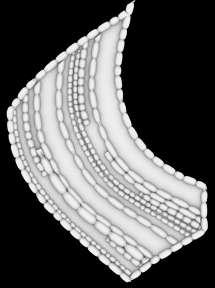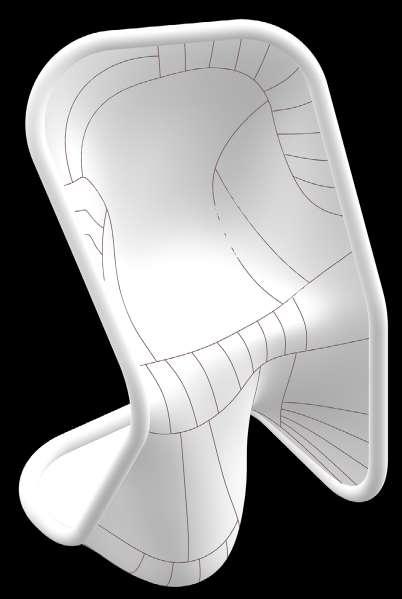
1 minute read
DESIGN LANGUAGE DEVELOPMENT STITCHING PROCEDURE
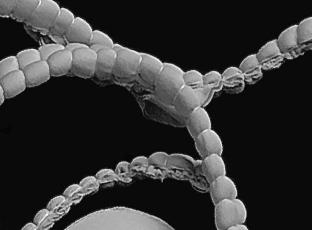
Stitching method for larger scale Details on the stitched fabric
Advertisement
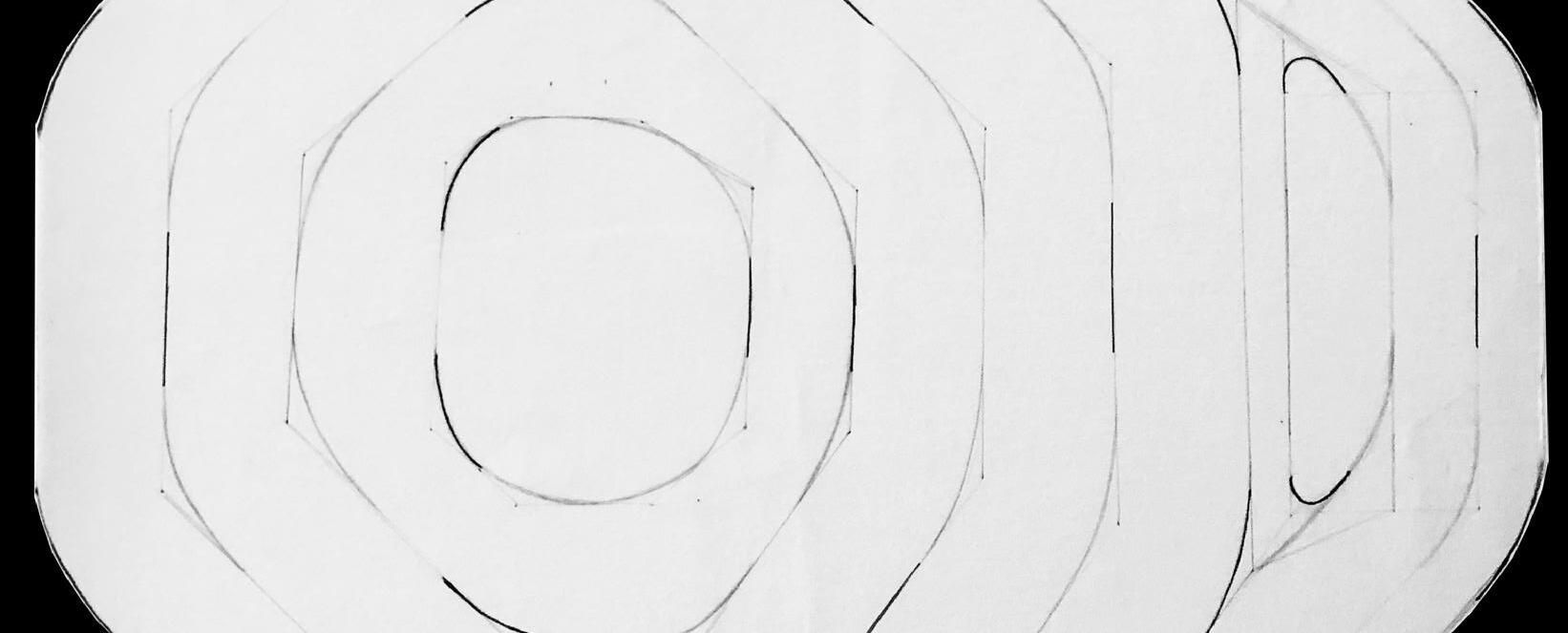
The three-dimensional samples thus generated from a flat surface are subject to a number of design constraints.
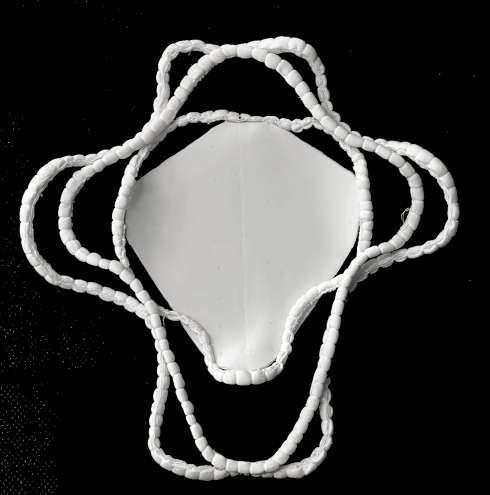
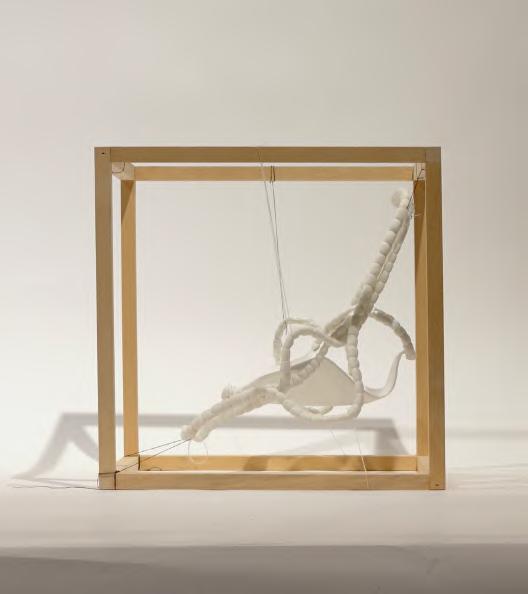
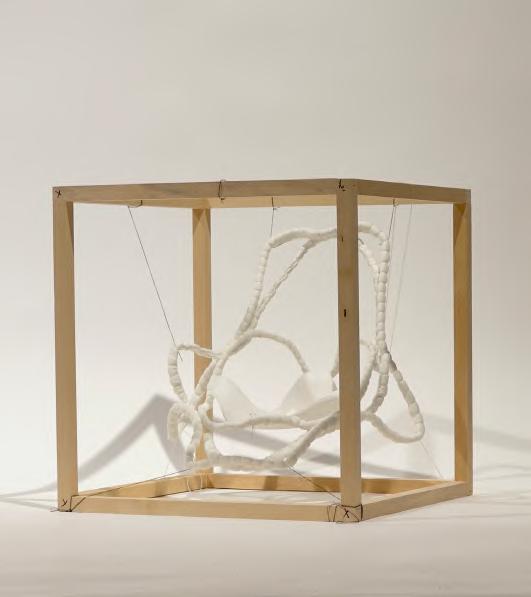
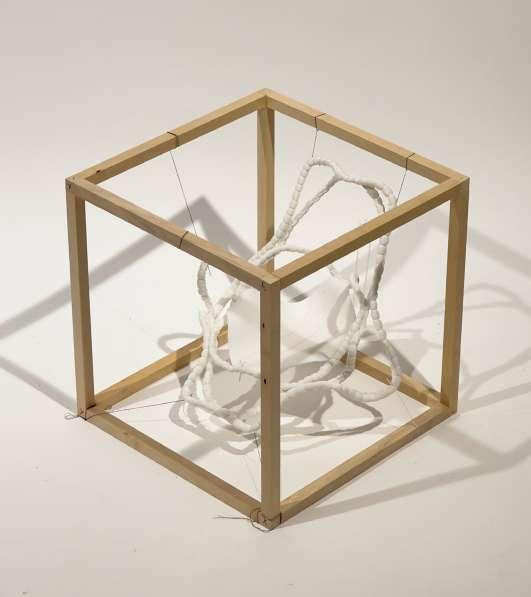
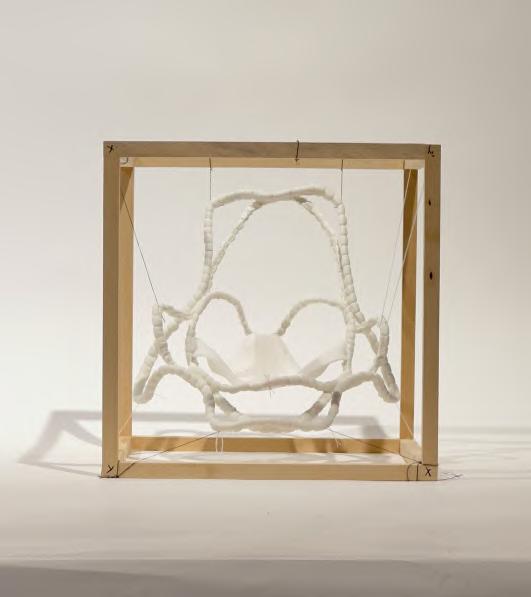
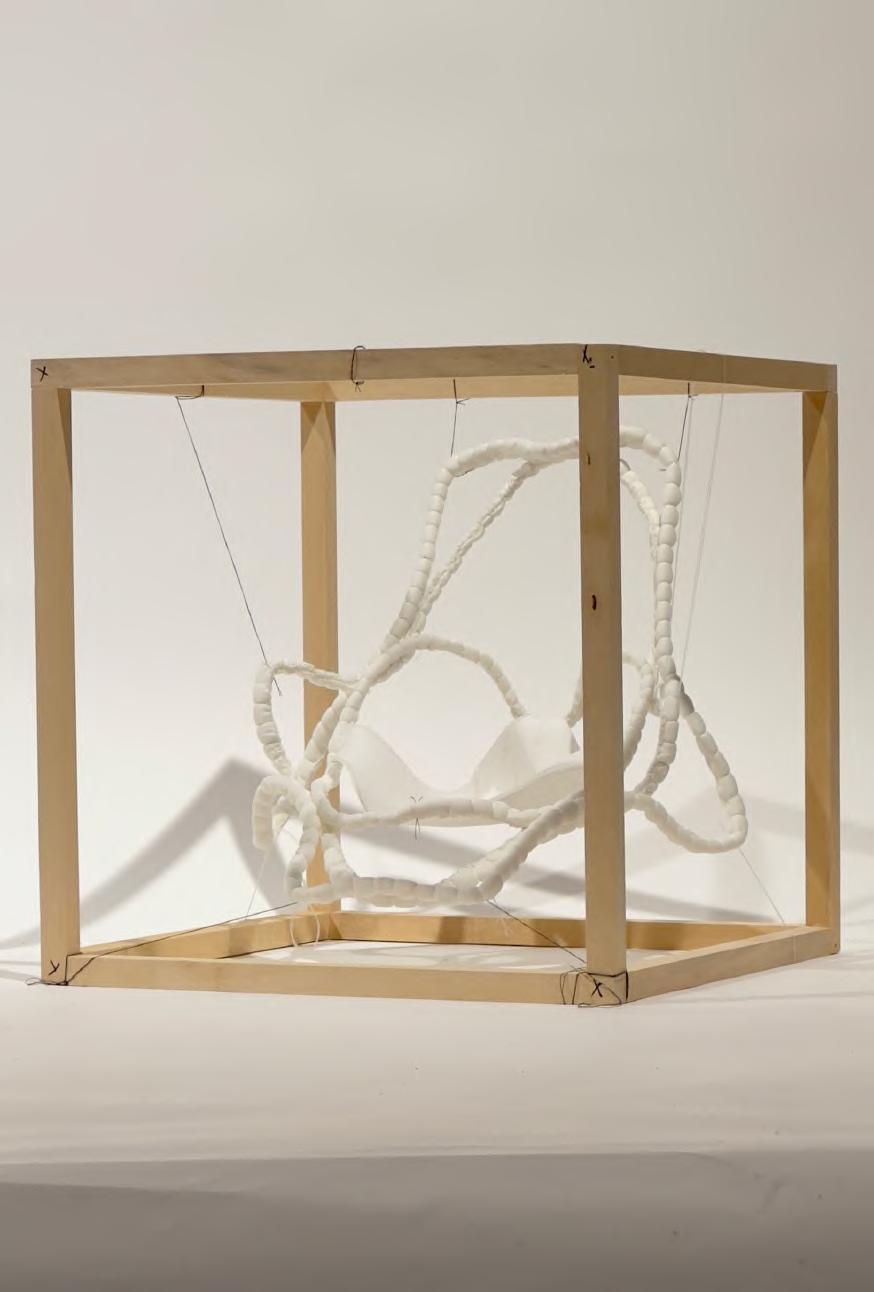
Firstly, the form of the sample is related to the drawing on a flat fabric.
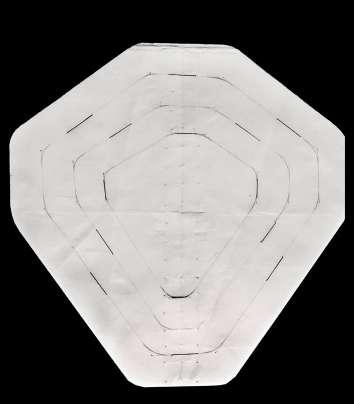
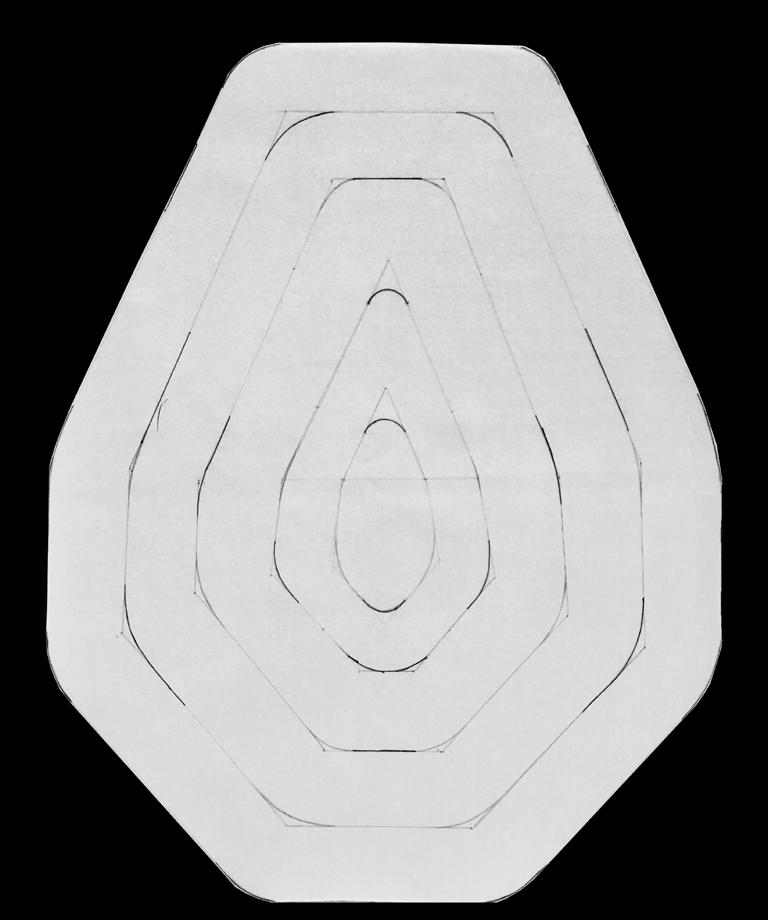
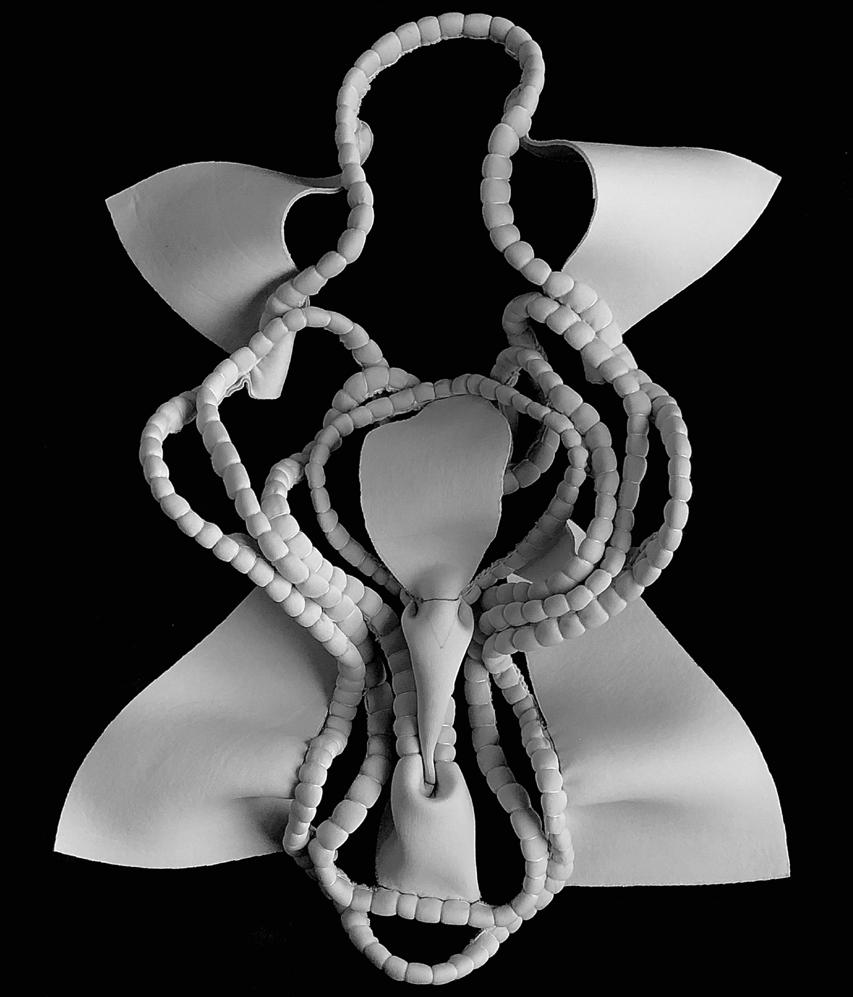
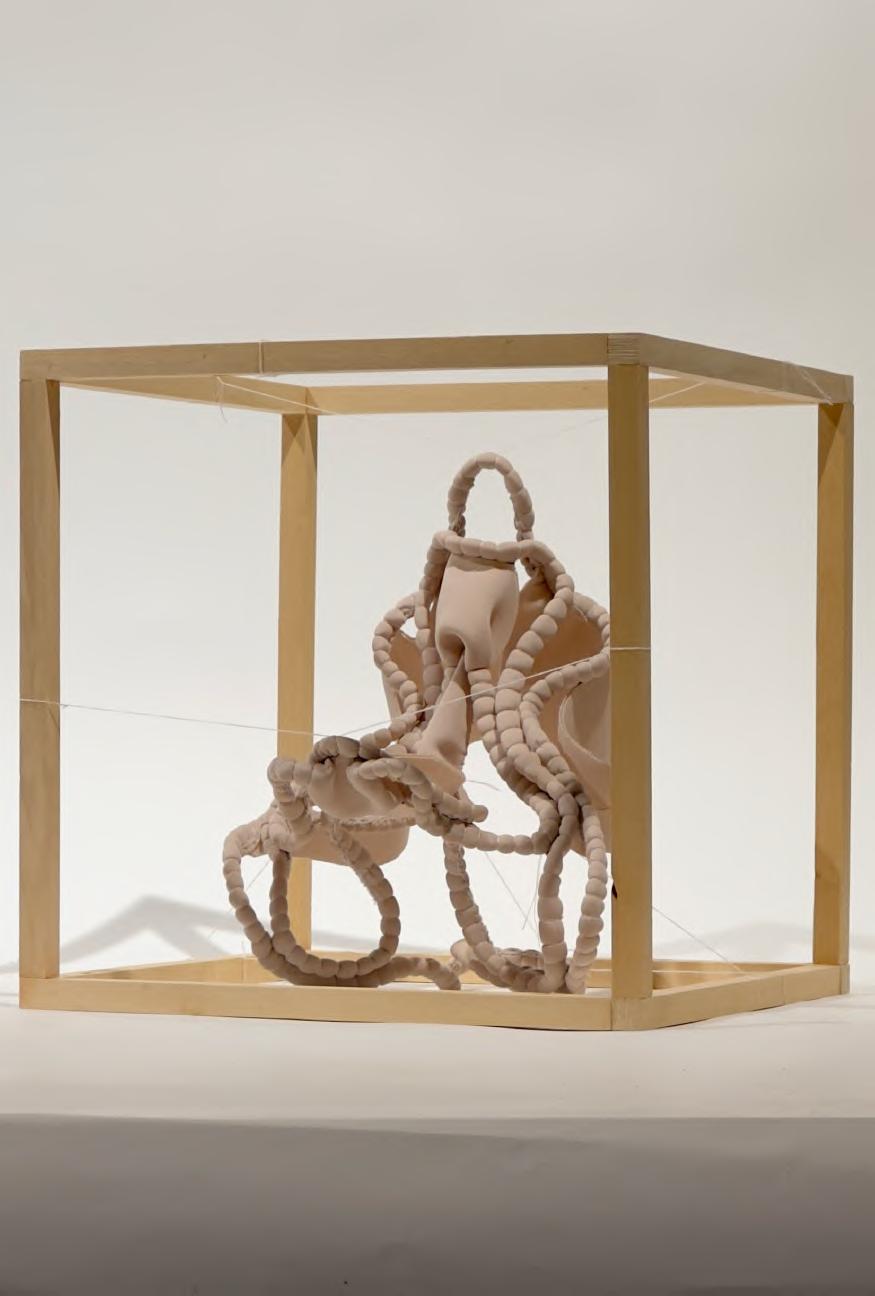
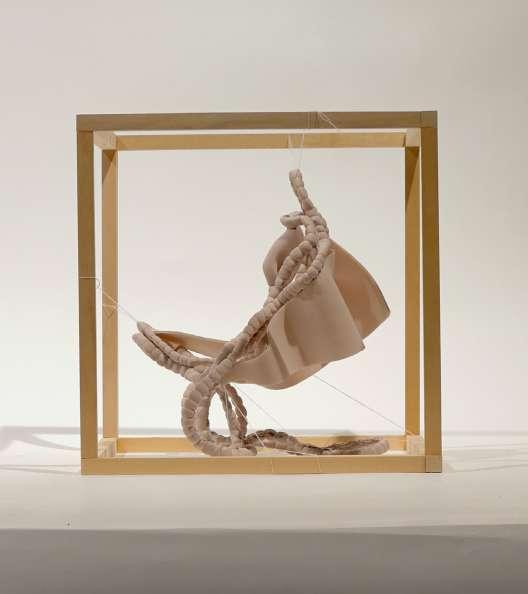
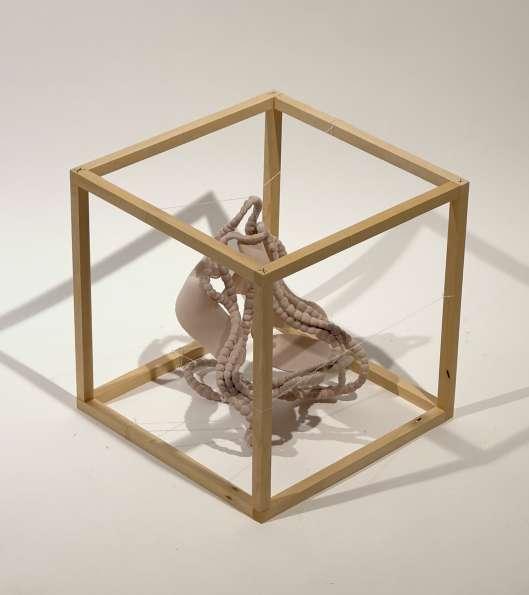
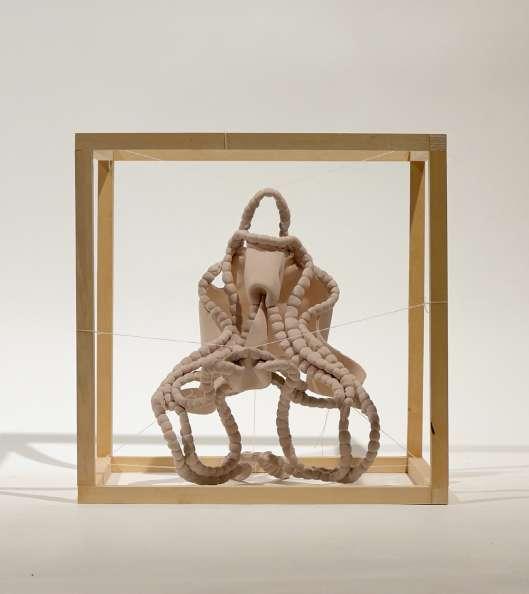
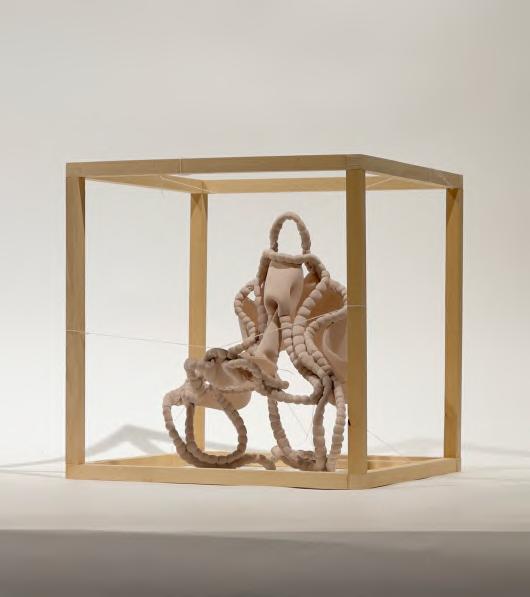
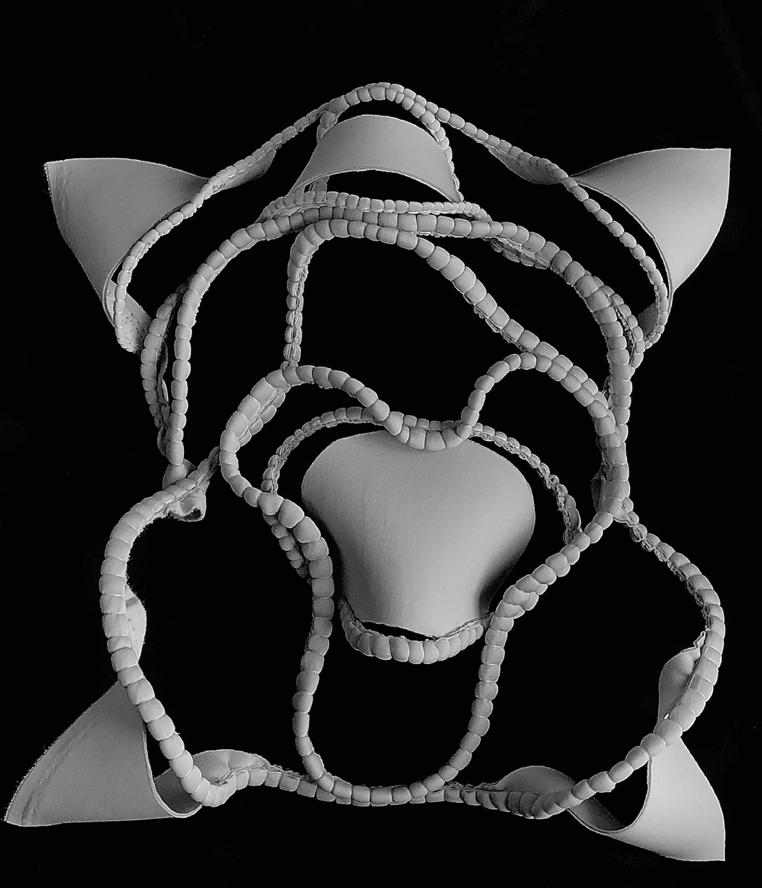
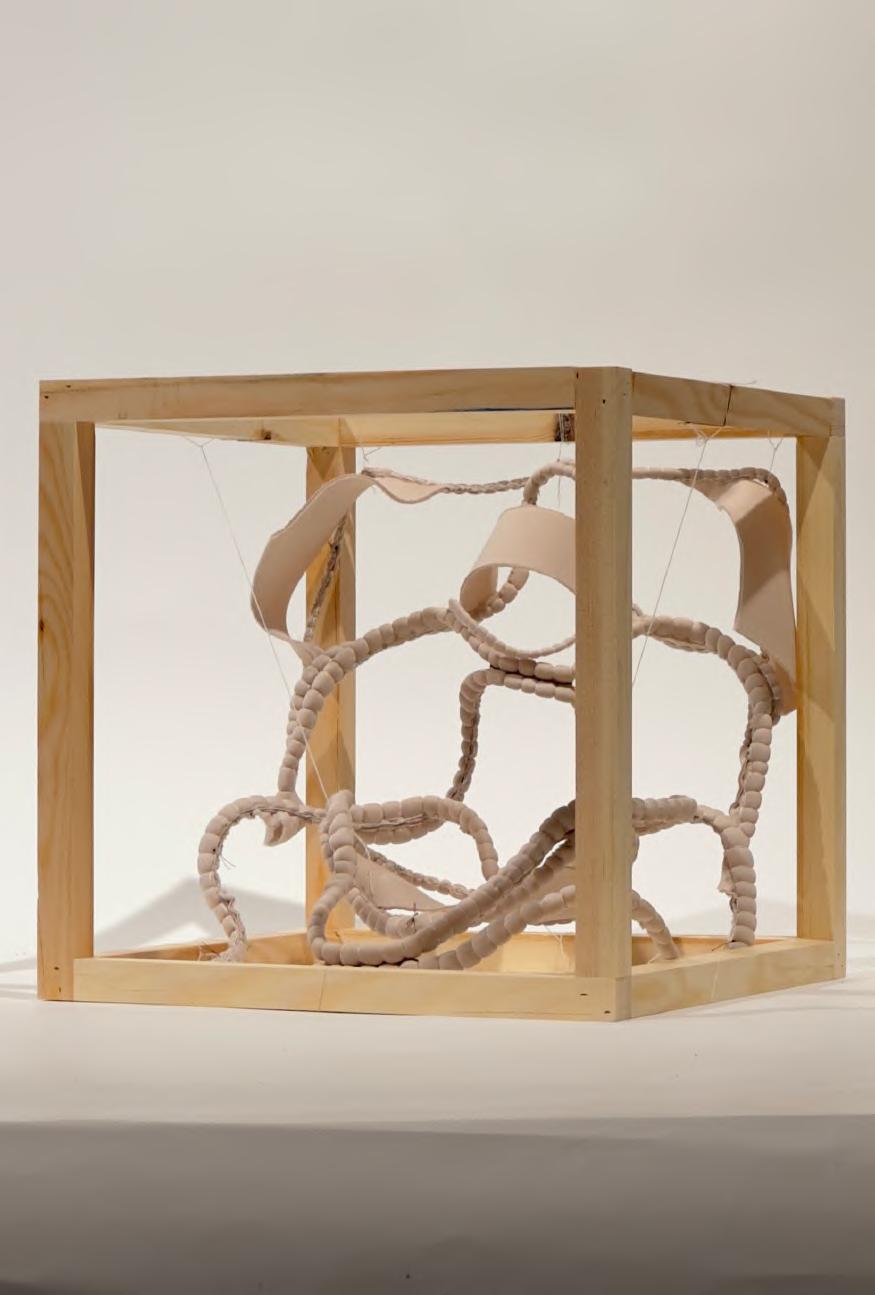
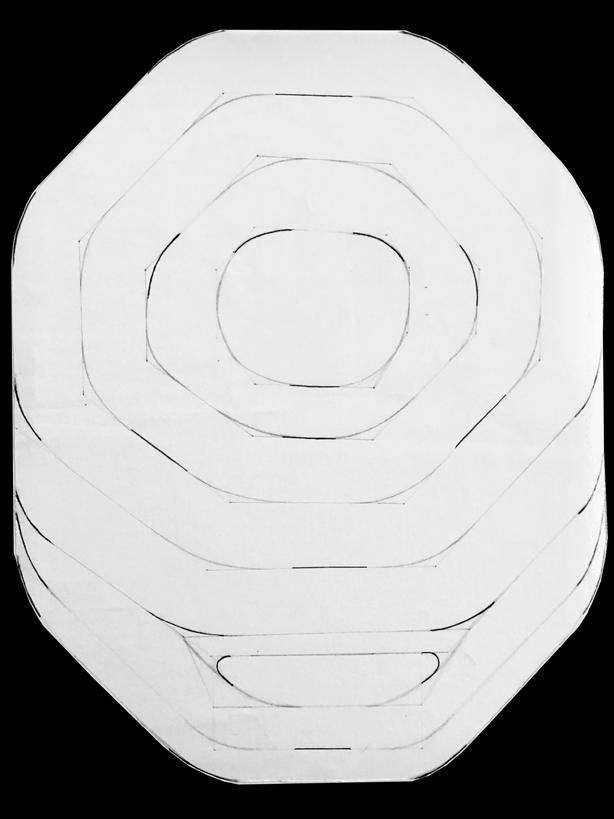
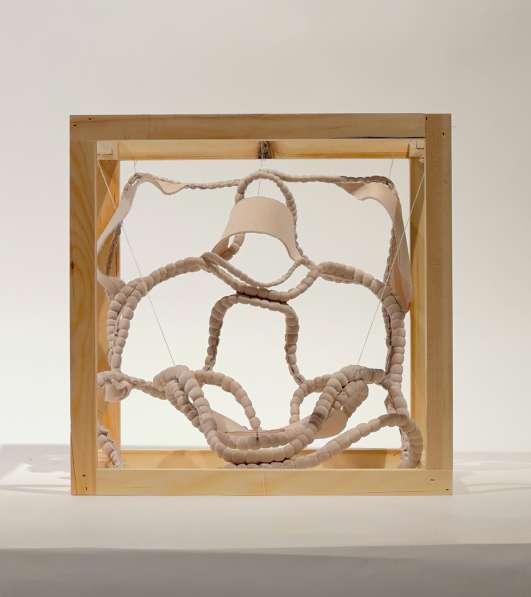
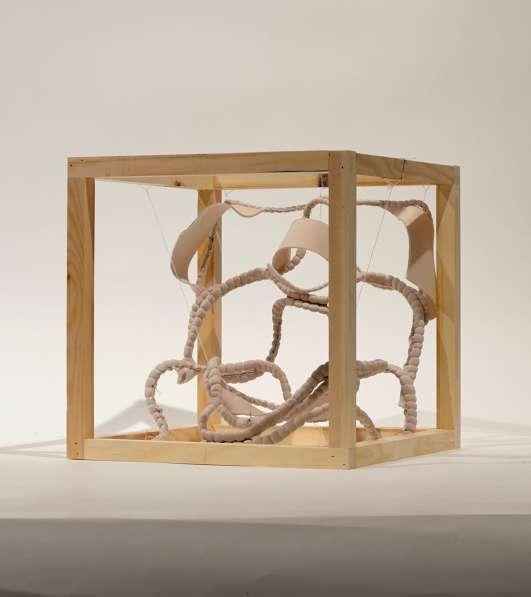
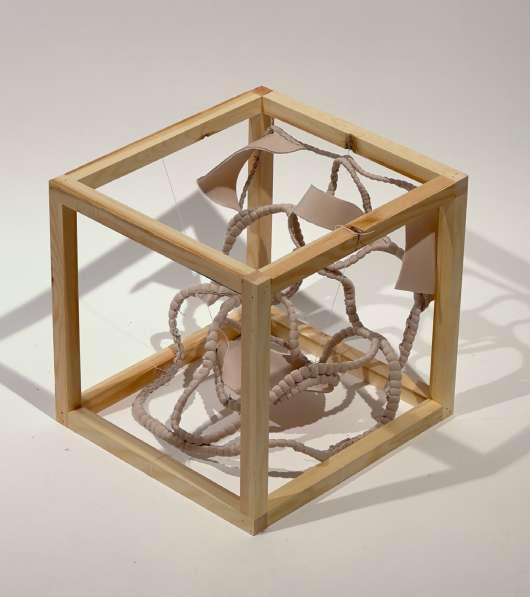

APPLICATION | 1:1 SCALE OF CHAIR
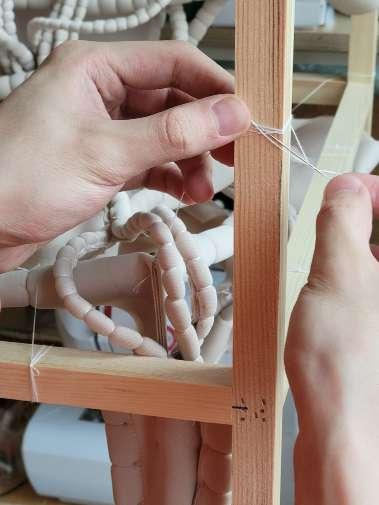
A full-size chair is assembled from several parts. Every piece is cut and sewd symmetrically and also assembled to form a symmetrical chair.
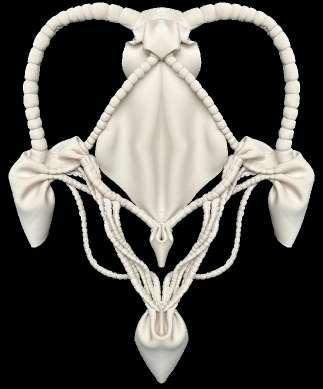
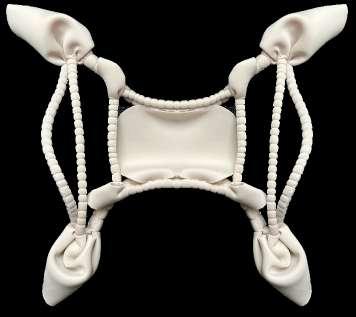
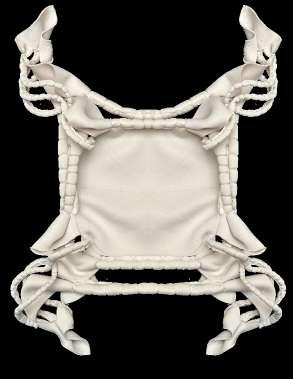
With a proven workflow, we tried to make a chair on a 1:1 scale. We made the chairin several parts separately. They were then assembled and fixed to the frame, eachpart being connected to the other using interlocking, juxtaposing and nestingmethods.


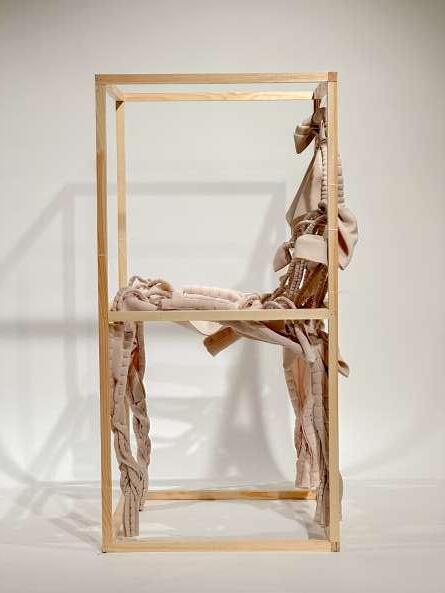
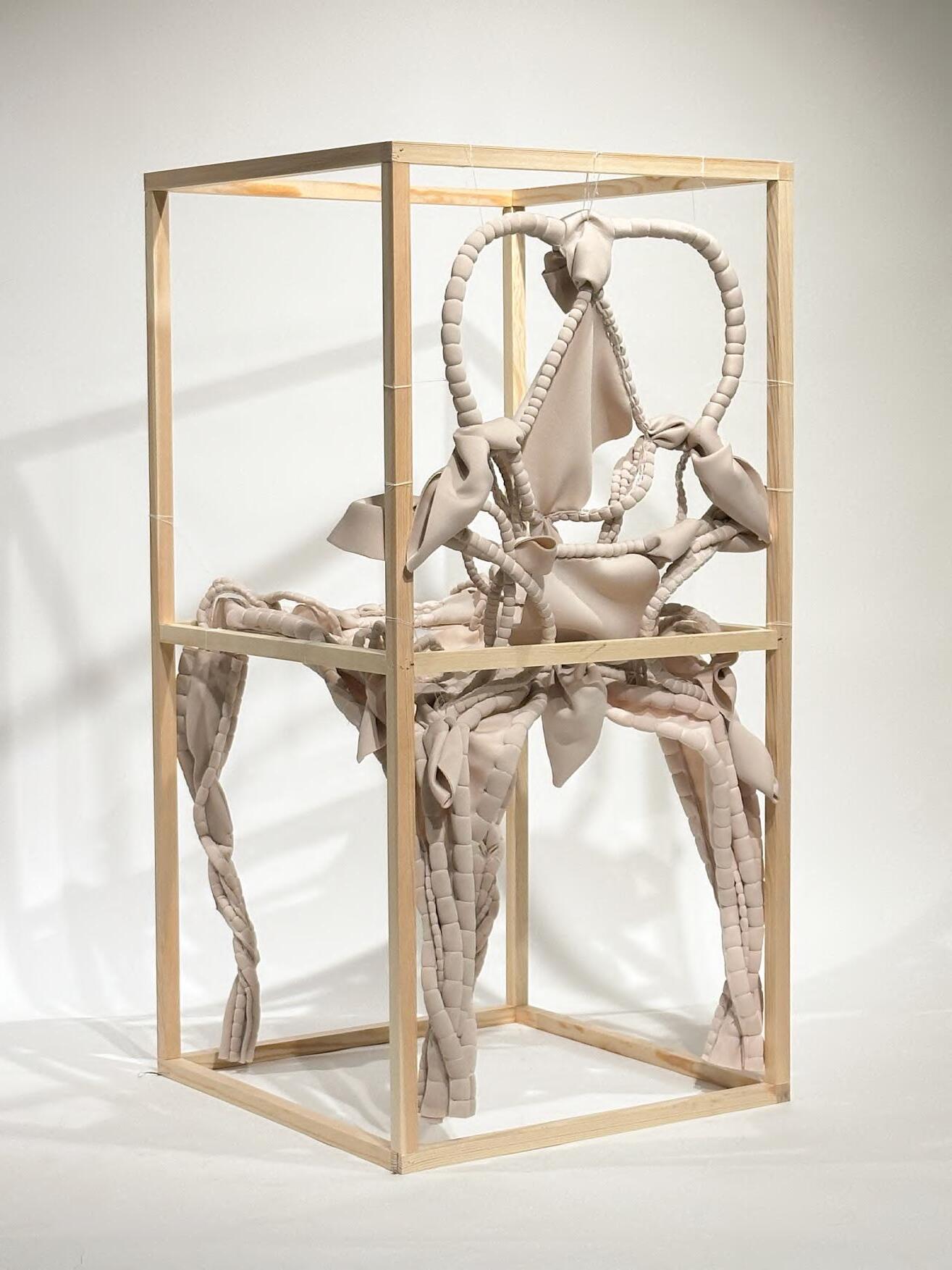

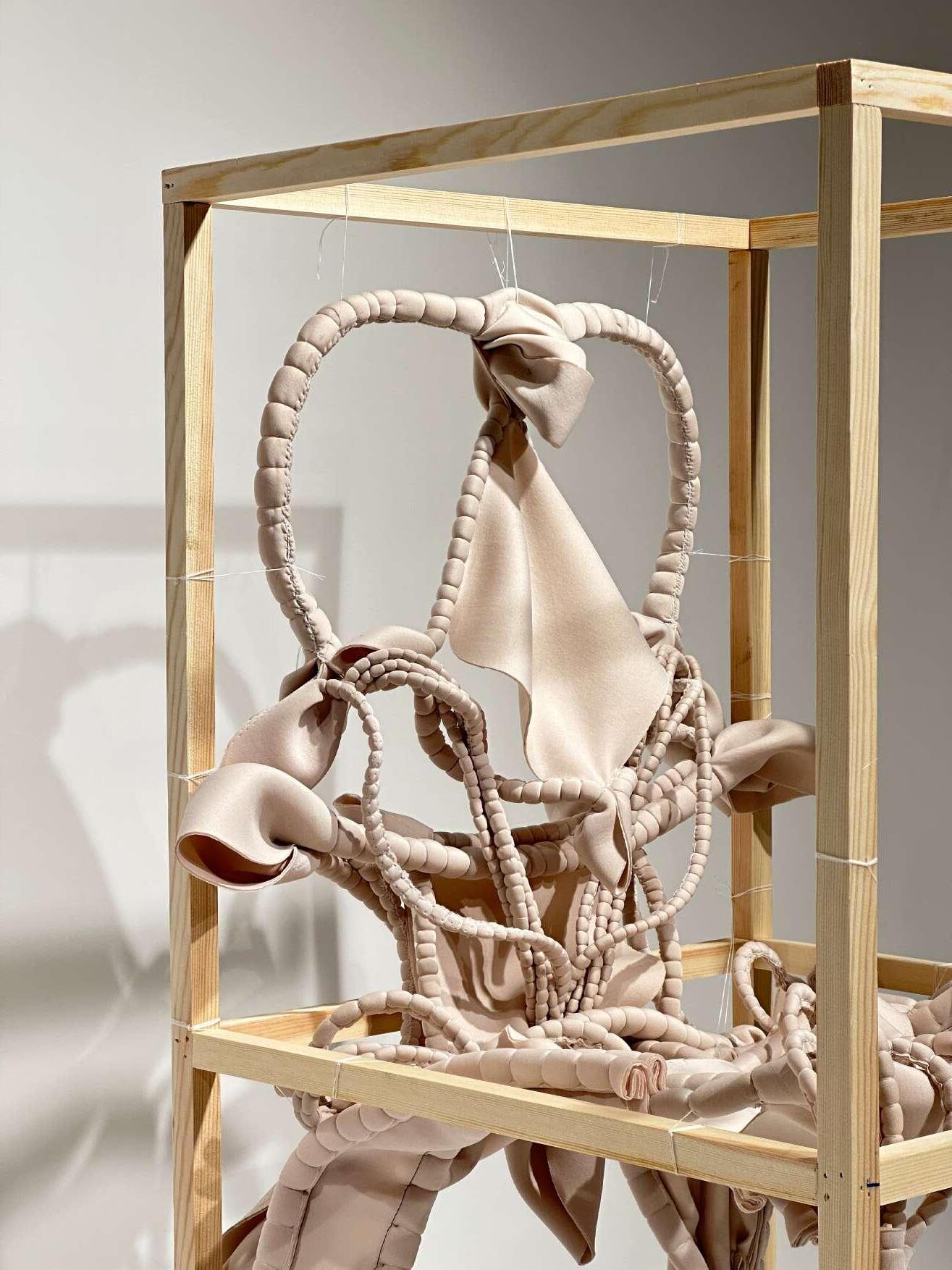
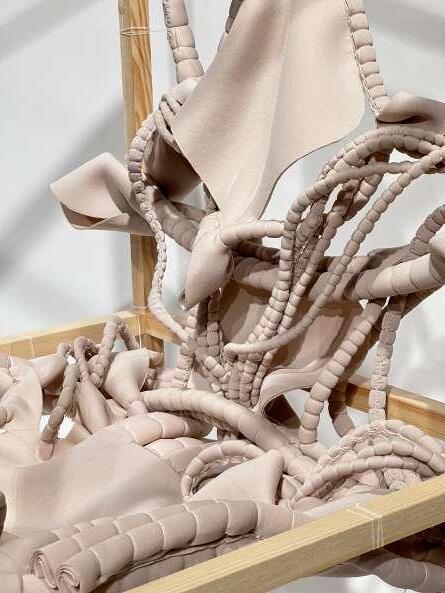
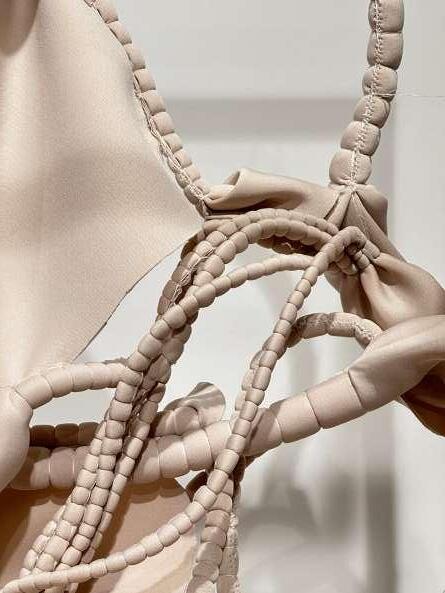
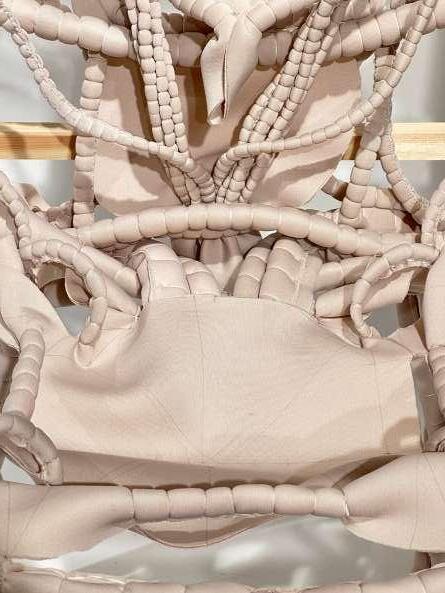

APPLICATION 1:1 SCALE OF CHAIR
We have a rich approach to the details of our projects. This is not only in the size ofthe stitches, but also in the combination of stitch curves and fabrics, the interlacingbetween stitches, etc.
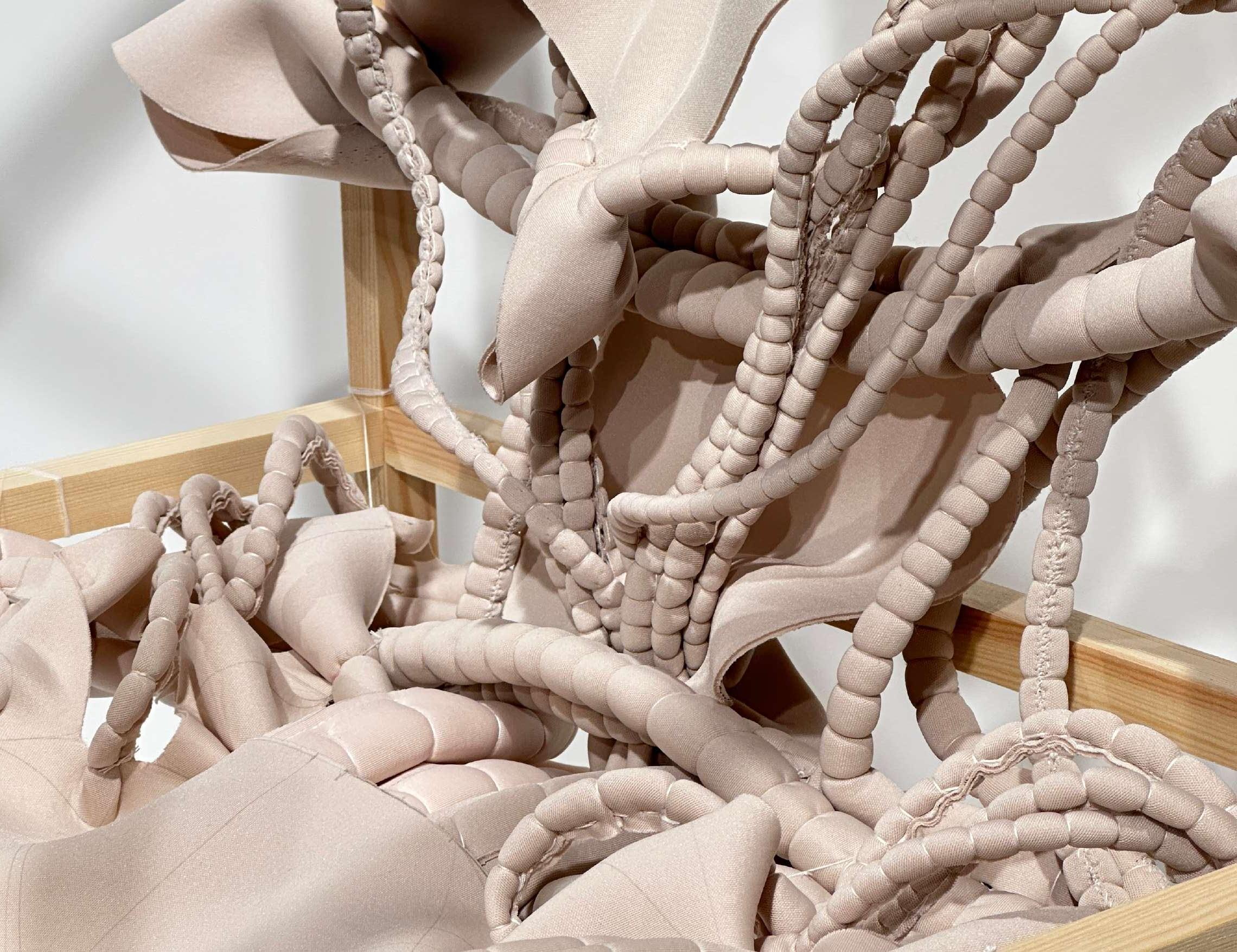
The design has been in a symmetrical design context for a long time and we havetried to break it from certain angles.
By cutting the threads of some of the fixed parts.each time a control thread is reduced, a part of the chair changes under the influence of gravity. The symmetrical sewing with the free flowing state of the objectbetter expresses the fluidity of the material and at the same time breaks thedistanced and serious atmosphere of the project.
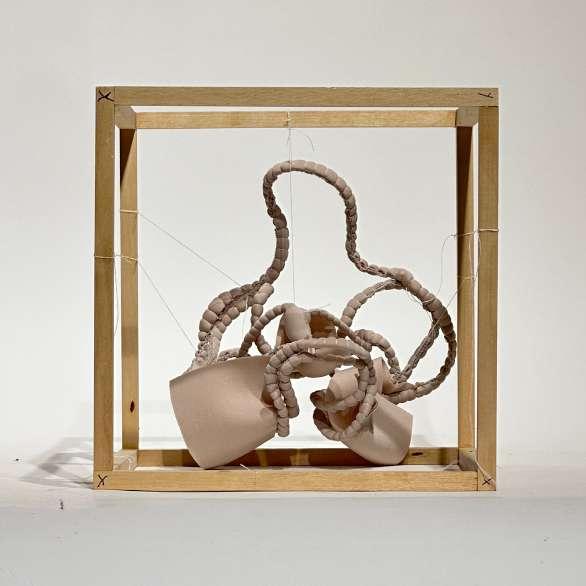
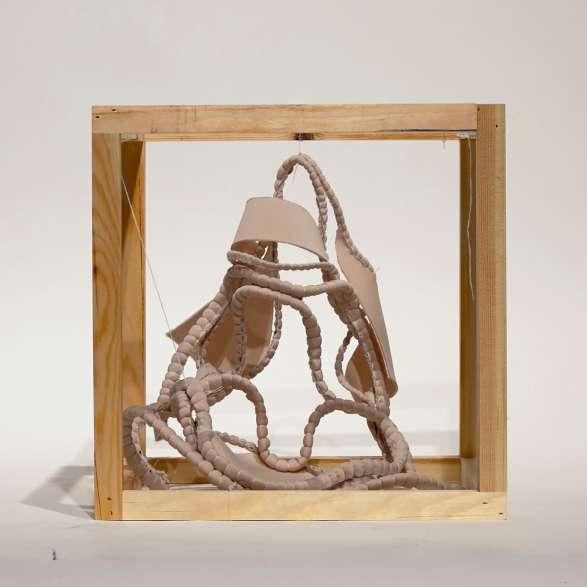
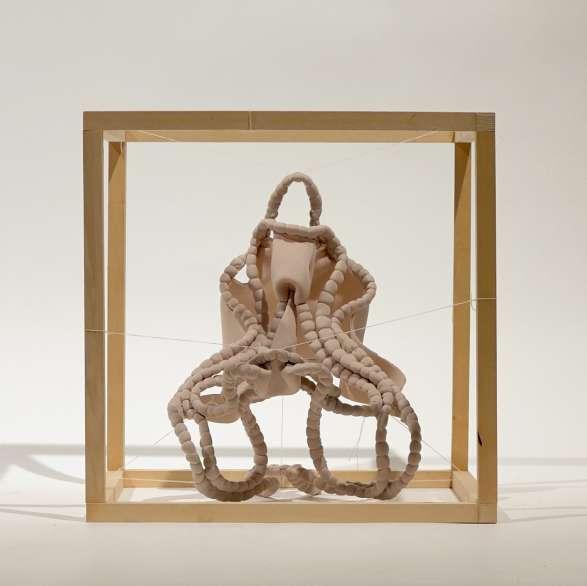
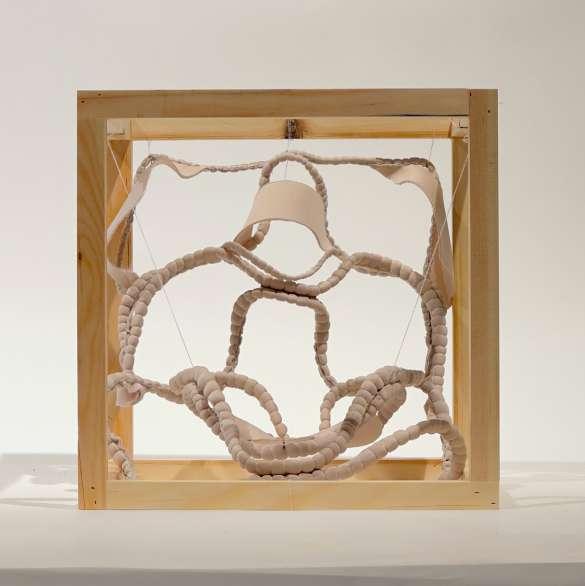
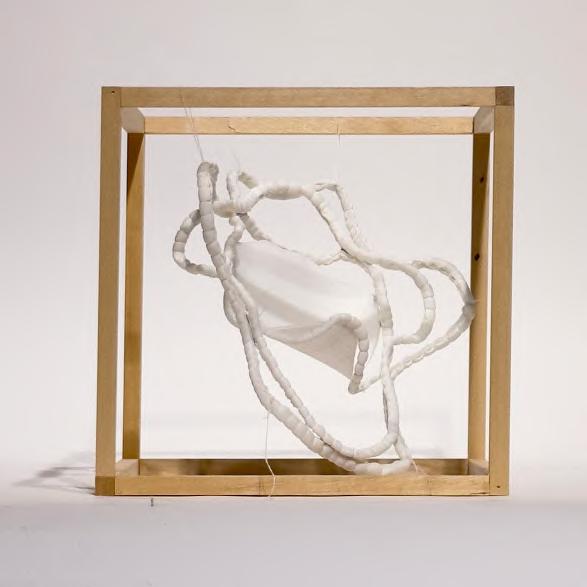
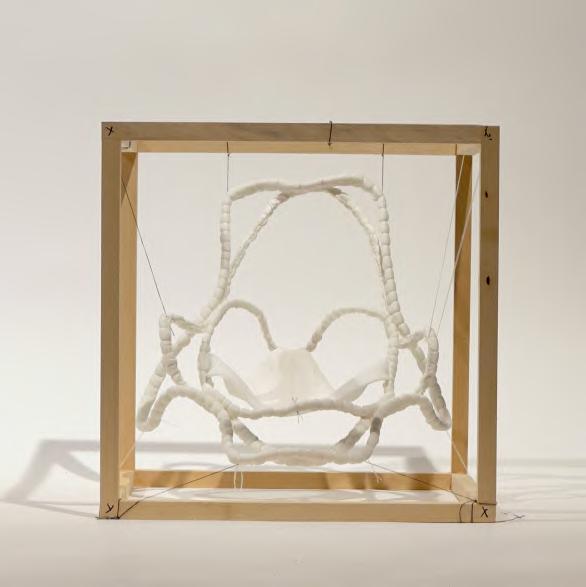
After cutting the controlling threads, we repeatedly reversed the entire frame tocreate a rich variation in the form of such a soft chair. We weakened the control overthe fixation of the chair, using gravity to create variations in form and observation.The symmetrical handwork produces a rich variety.
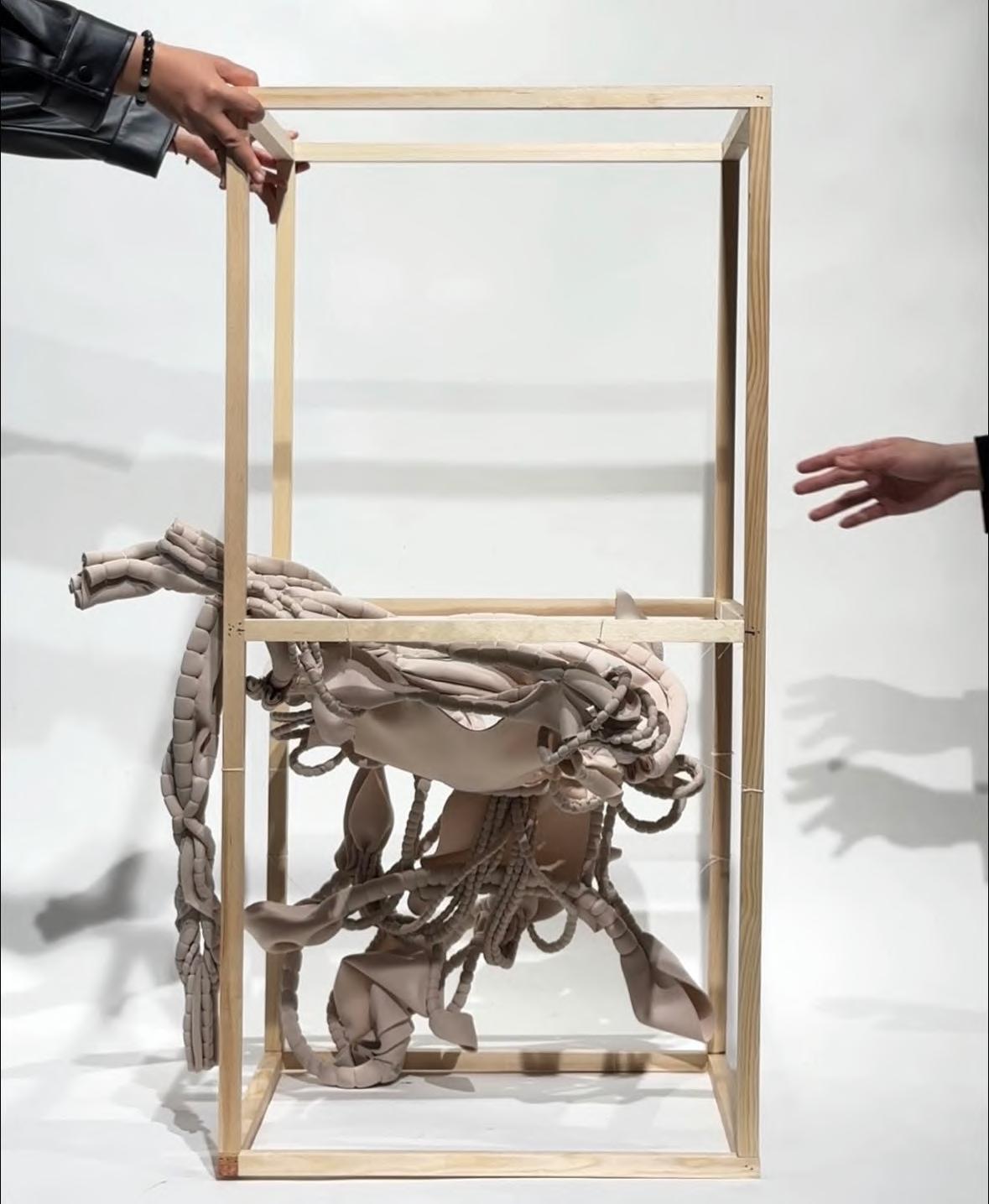
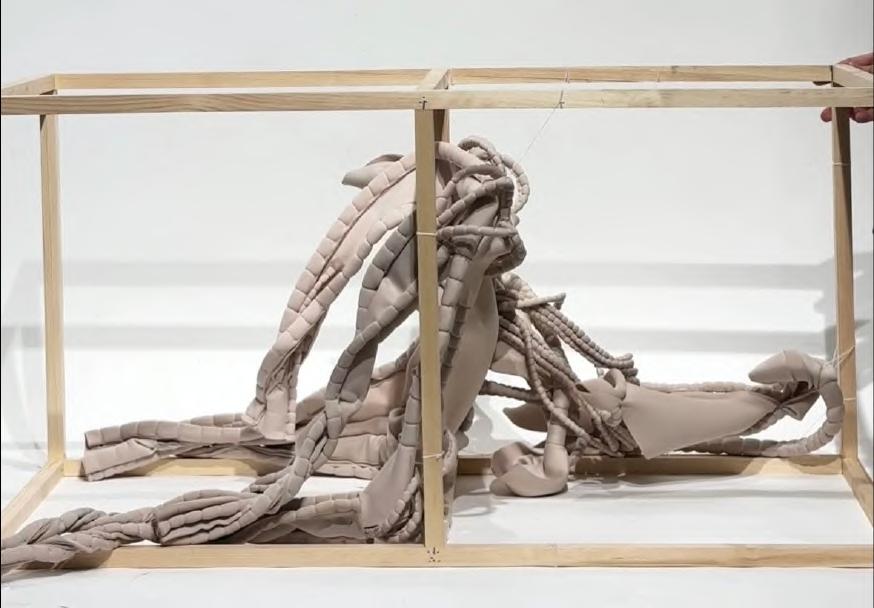
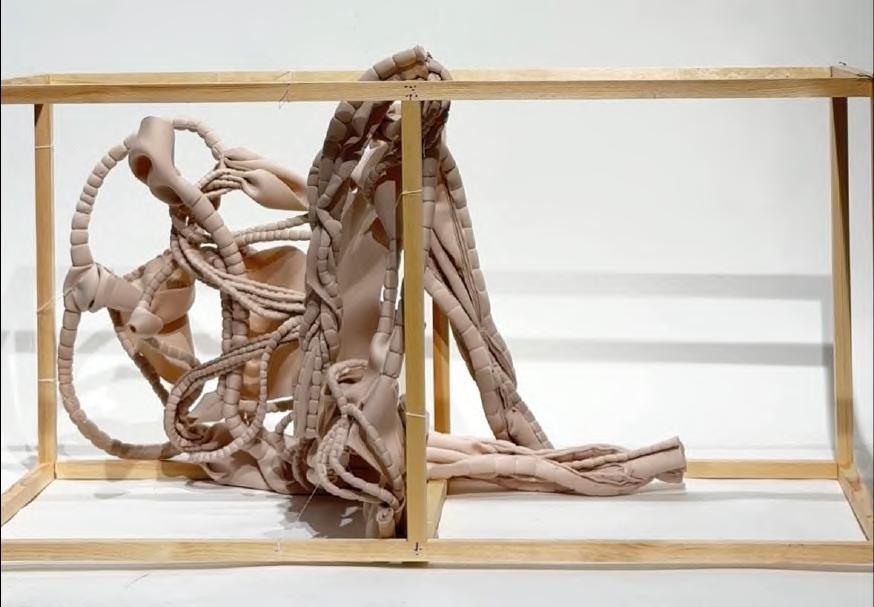
The focus of the work shifts from trying to achieve a symmetrical figure to allowingthe chair to produce a more free-flowing form. This state of affairs is not only moreplayful, but also an expression of our reflection on materials, craftsmanship and howto introduce free change
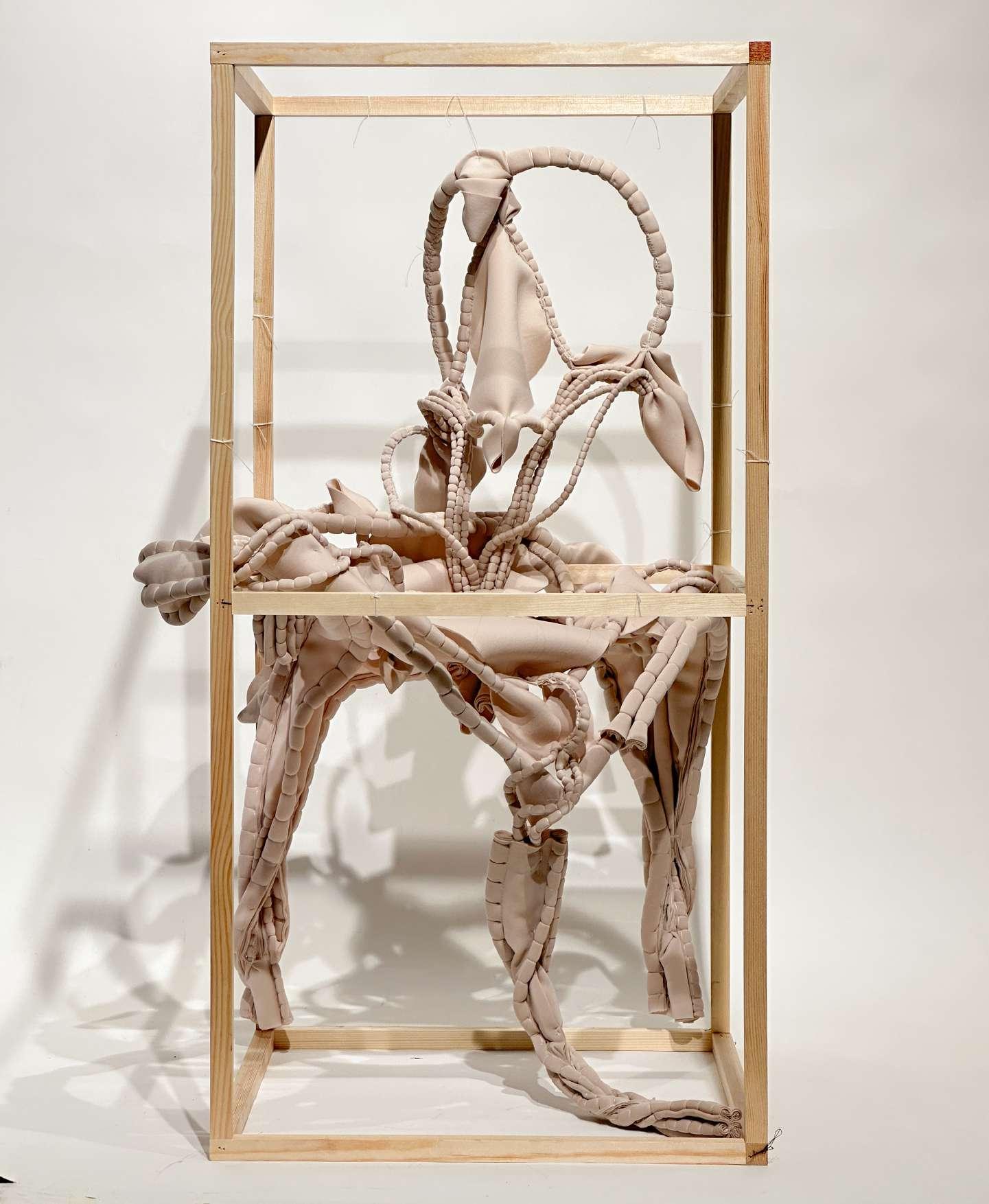
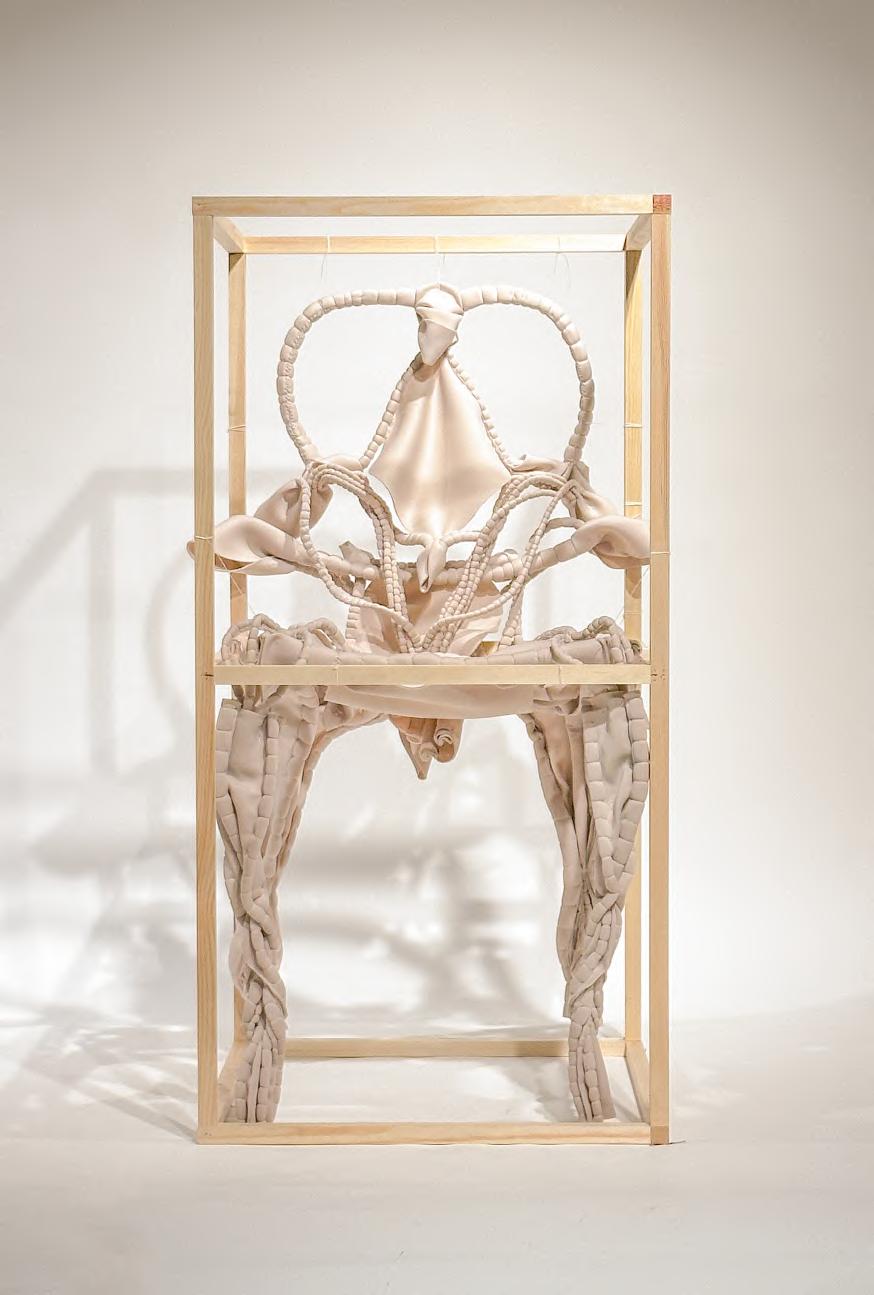
CHAPTER 5:
CHAIRS DESIGN 2 - FRAMEWORK + SURFACE
GUIDELINE FOR CHAIR DESIGN
SURFACES ON THE CHAIR
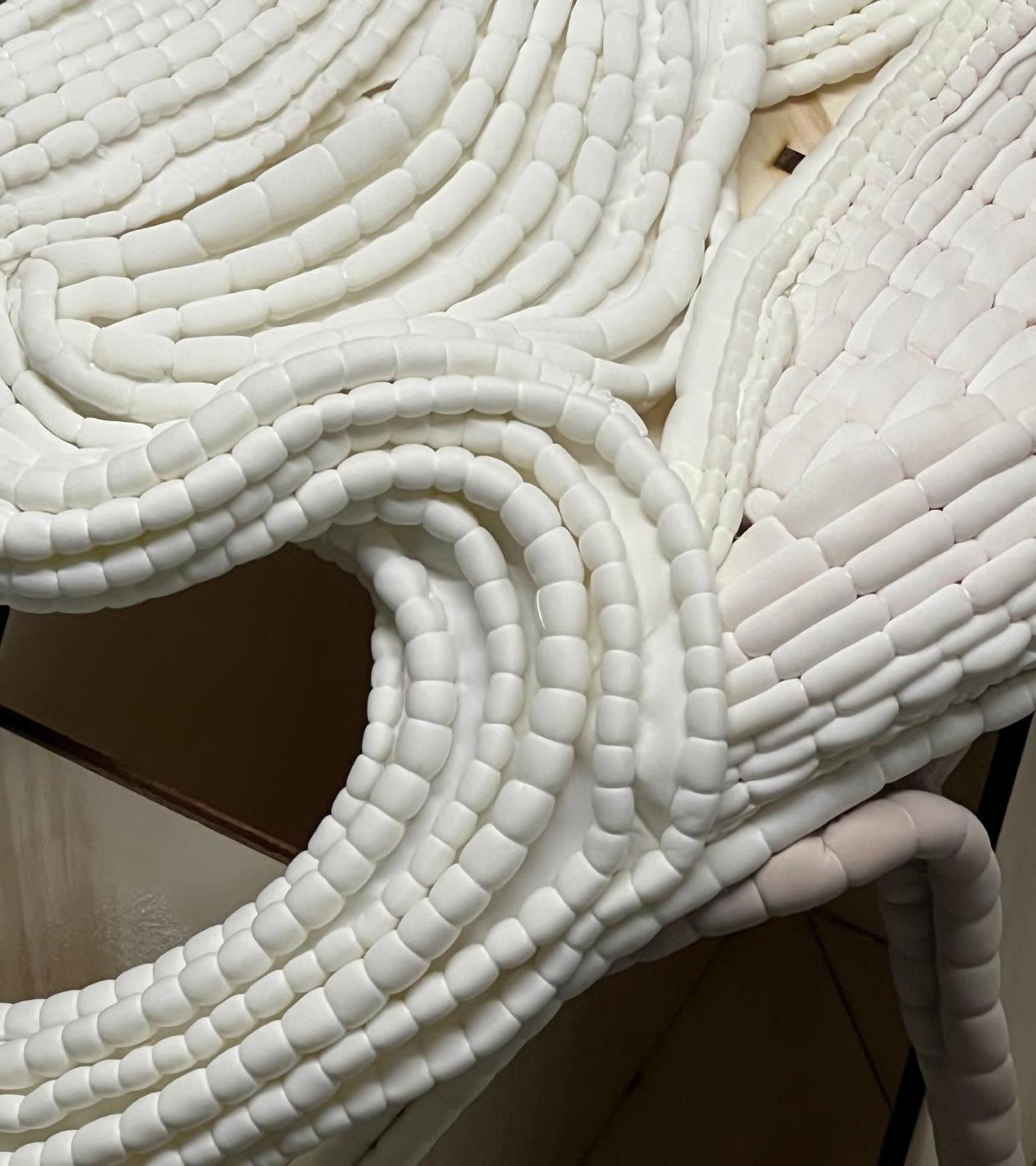
Guideline Option 1
Simple shape of single chairs
Simple geometry as a boundary to ensure a simple shape


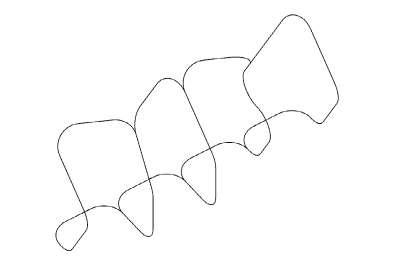

Creating simple and asymmetrical guideline of chairs
Controlling edges for individual chair and generating a series of chair
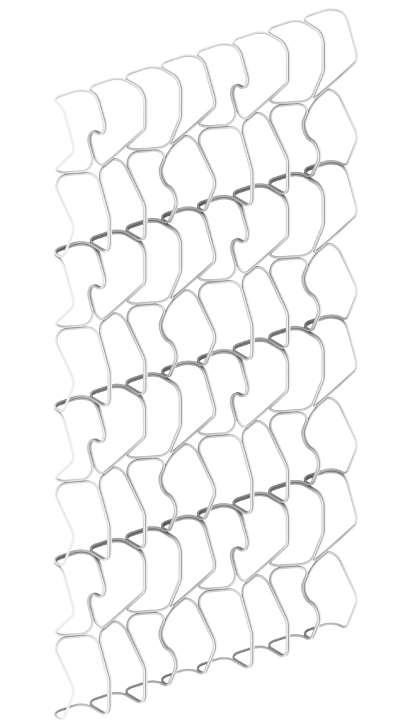
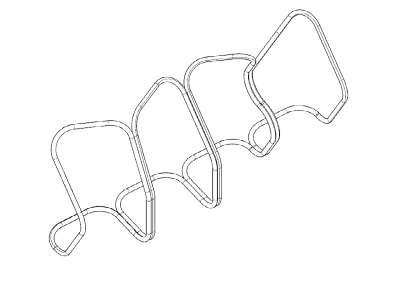
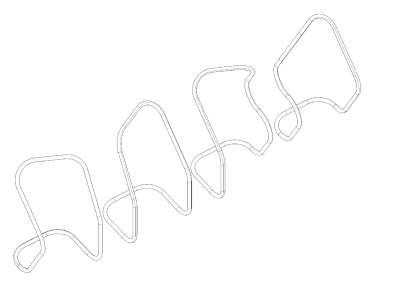
Other usage: modular architectural element (eg. facade system)
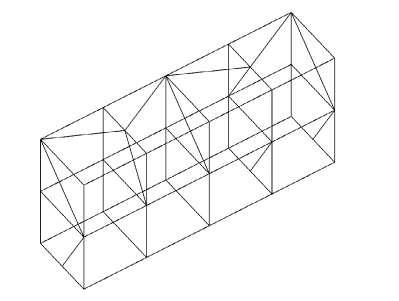

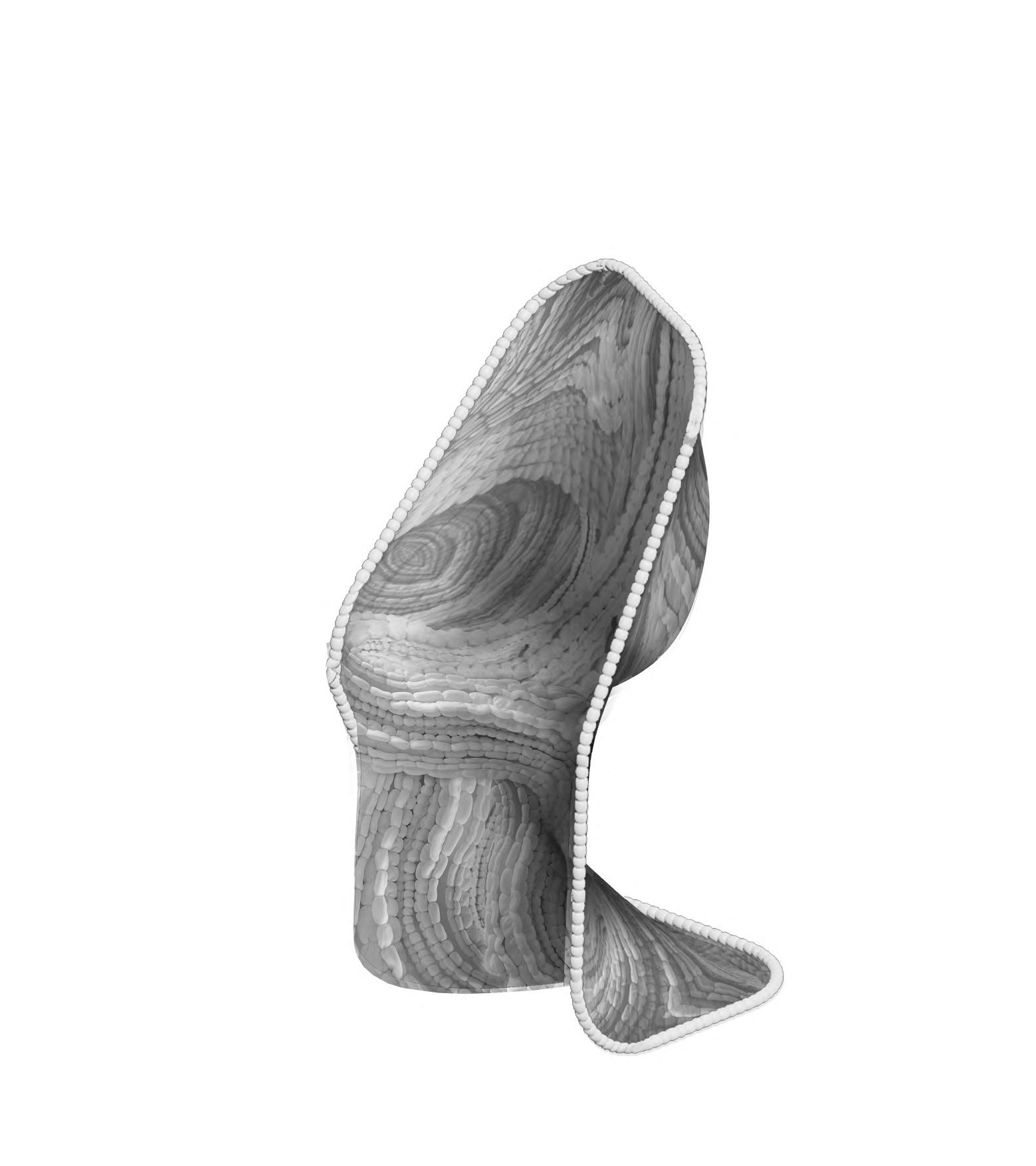
METHOD 01 SQUARE AND STRUCTRUAL LINES
METHOD 02 CURVES AND STREAMLINE
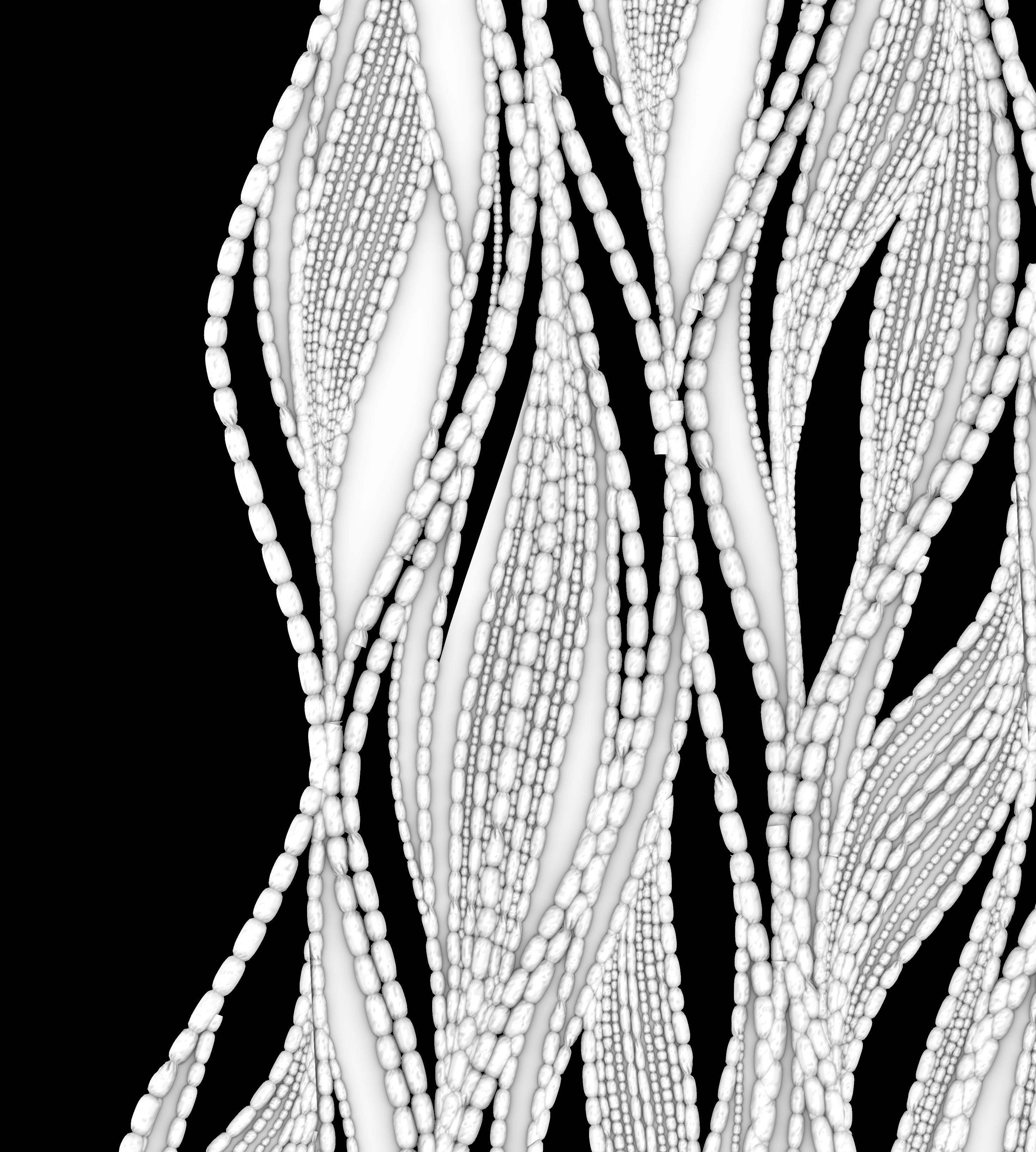
METHOD 01 SQUARE AND STRUCTRUAL LINES


